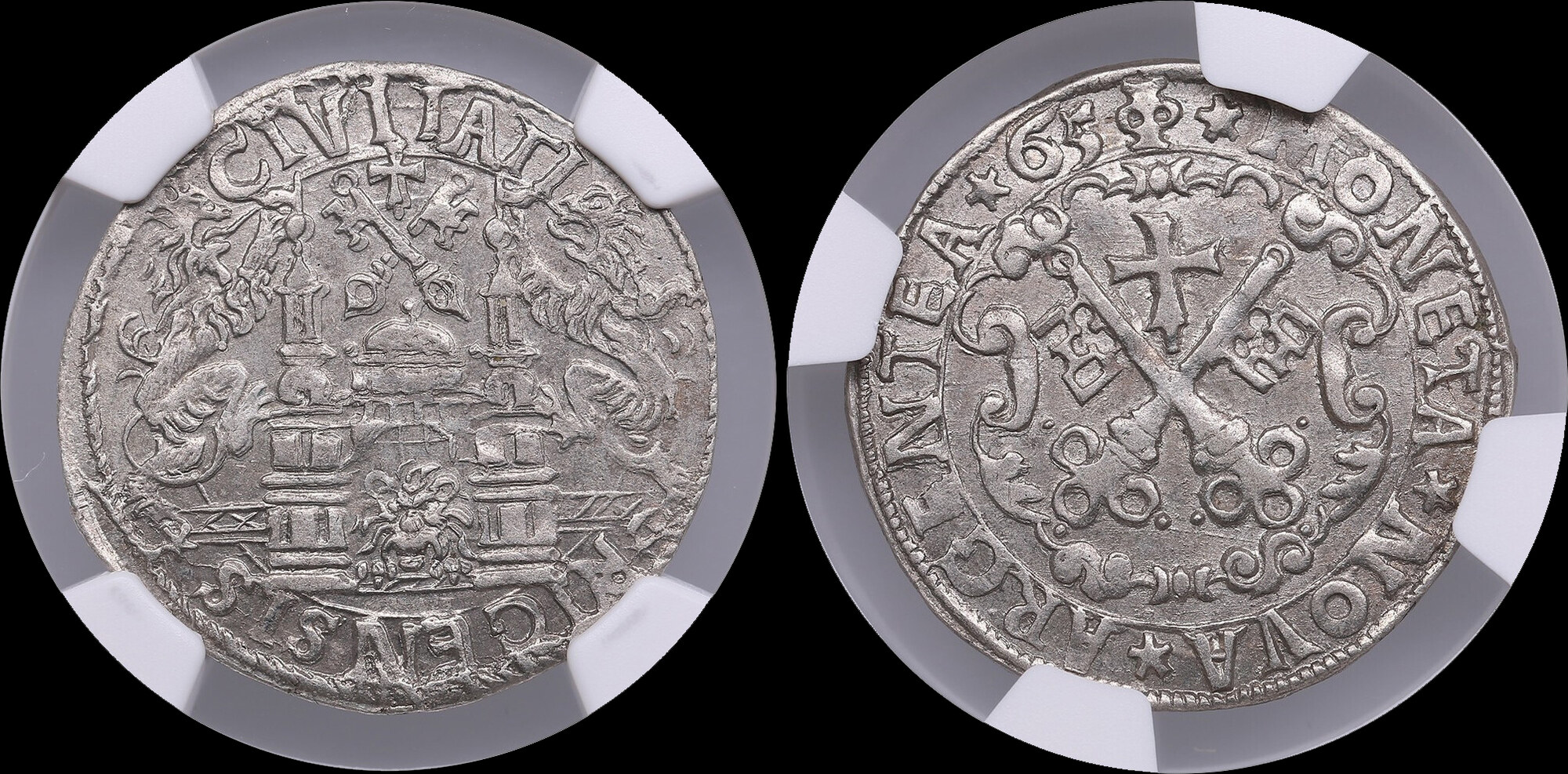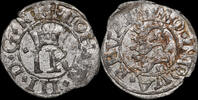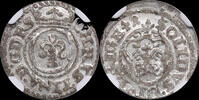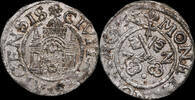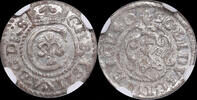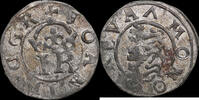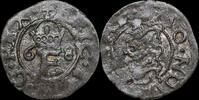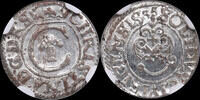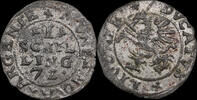MA-ID: 611902090
Customer feedback Numex OÜ
Excellent seller, highly recommended!
Thank You! Nice items for reasonable price, quick shipping! Excellent!!!
Ja, ich bin mit dem gekauften Geldschein vollig zufrieden. Danke.
M.Brindz...
Super Ware! Gerne wieder.
Poland / Free City Riga 1/2 Mark 1565 Free City Riga (1561-1581) - NGC MS62 NGC MS 62
Numex OÜ 

9
On MA-Shops since 9 years
1195 ratings,
100 % Positive (last 24 months)
Worldwide shipping
1,170.38 £1350,00 EUR
Import tax may be added
+ 21.67 £ shipping ( to United Kingdom )
Delivery time: 15 - 18 days
+ 21.67 £ shipping ( to United Kingdom )
| Customer Support +49 (0)2871 2180 383 |
| Payment methods |
| Wire Transfer |
 Certification details
Certification details
Rev: *MONETA*NOVA*ARGENTEA*65Φ
Only 3 coins certified finer by NGC. A splendid, well-centered exemplar exhibiting fine luster and adorned with delightful, elegant coloring. Rare state of preservation! Haljak 878a R. Rare.
The Riga 1/2 Mark of 1565: A Numismatic and Historical Perspective
The silver 1/2 Mark from the Free City of Riga, minted in 1565 during its brief period of autonomy (1561–1581), is a striking numismatic artifact from the early modern Baltic region. Graded NGC MS62, cataloged as Neumann# 420, Haljak# 878a, and Kopicki 8053 (R3), and crafted from silver, this coin showcases a splendid, well-centered design with fine luster and delightful, elegant toning. With only three coins certified finer by NGC, its exceptional state of preservation enhances its rarity and appeal. The inscriptions “CIVITATI RIGENSIS*” on the obverse and “MONETANOVAARGENTEA65Φ” on the reverse, paired with intricate heraldic imagery, proclaim Riga’s independence and economic vitality, encapsulating a fleeting moment of self-governance amidst the turbulent Livonian Wars.
Historical Context
Riga, a prominent Hanseatic League city, declared itself a Free Imperial City in 1561, seeking autonomy from the disintegrating Livonian Confederation during the Livonian War (1558–1583). This period of independence, lasting until 1581 when Riga was incorporated into the Polish-Lithuanian Commonwealth, was marked by geopolitical upheaval as Sweden, Denmark, Poland-Lithuania, and Russia competed for control of the Baltic region. The Free City status, nominally under the protection of the Holy Roman Empire, allowed Riga to govern itself, mint its own currency, and assert its economic and political sovereignty. The 1/2 Mark of 1565, struck just four years into this independent period, symbolizes Riga’s bold assertion of self-determination in a contested landscape.
As a key trading hub on the Daugava River, Riga’s wealth stemmed from its role as a conduit for commerce between Western Europe and the East. The city’s mint, active during its Free City period, produced coins like the 1/2 Mark to facilitate trade and project civic pride. The coin’s issuance in 1565 reflects Riga’s efforts to establish a stable and recognizable currency amid the chaos of the Livonian War, which saw the collapse of the Livonian Order and the encroachment of foreign powers. Beyond its economic function, the coin served as a propaganda tool, proclaiming Riga’s autonomy and resilience to merchants, allies, and adversaries alike.
Numismatic Details
The Riga 1/2 Mark of 1565 is a hand-struck silver coin, typically weighing around 5–6 grams, though slight variations are common due to 16th-century minting practices. Its NGC MS62 grade indicates mint state condition with minimal wear, exhibiting fine luster and elegant, multicolored toning that enhances its visual appeal. The catalog references—Neumann# 420, Haljak# 878a, and Kopicki 8053 (R3)—confirm its rarity, with the R3 designation indicating significant scarcity. With only three coins certified finer by NGC, this exemplar is among the finest known, making it a standout for collectors.
Obverse: The inscription “CIVITATI RIGENSIS*” (To the City of Riga) surrounds a depiction of a city castle flanked by two lions, with a cross and crossed keys above. The castle represents Riga’s fortified strength and civic identity, while the lions symbolize courage and nobility. The cross and crossed keys, traditional symbols of ecclesiastical and civic authority, reflect Riga’s status as a religious and commercial center within the Hanseatic League. The star punctuation adds a decorative flourish, characteristic of 16th-century Baltic coinage.
Reverse: The inscription “MONETANOVAARGENTEA65Φ” (New Silver Money, 1565) encircles a cross over crossed keys within a decorated multi-pass (a heraldic frame or border). The term “Nova” underscores the coin’s role as a fresh issue during Riga’s independent minting, while “65” denotes the year 1565. The Φ symbol, likely a stylistic flourish or mint mark, enhances the coin’s aesthetic and authenticity. The crossed keys and cross reinforce the Christian and civic symbolism, tying the coin to Riga’s heritage.
The coin’s exceptional preservation, with only three finer examples certified by NGC, suggests it was carefully stored, possibly as a high-status piece rather than heavily circulated. Its fine luster and elegant, multicolored toning—described as delightful—make it a numismatic gem, highly prized for both its condition and historical significance. The Haljak 878a R designation further emphasizes its rarity, as such high-grade specimens from Riga’s Free City period are seldom encountered.
Significance
The Riga 1/2 Mark transcends its role as currency, embodying the city’s brief assertion of sovereignty during a period of regional instability. Its high silver content ensured economic trust, crucial for trade within the Hanseatic network and beyond, as Riga navigated alliances with Poland-Lithuania and resisted external domination. Numismatically, the coin bridges medieval and early modern traditions, with its castle, lions, and crossed keys reflecting Riga’s fortified identity, martial pride, and ecclesiastical authority. For historians, it provides evidence of Riga’s economic policies and minting capabilities during its Free City period, offering insight into the Livonian War’s impact on Baltic trade.
In modern numismatic collections, the 1565 Riga 1/2 Mark is highly coveted for its connection to a fleeting moment of Riga’s independence and its exceptional condition. The coin’s design—combining civic pride with monetary innovation—captures the aspirations of a city striving for self-governance amidst geopolitical chaos. Its scarcity, underscored by the R3 rating and limited NGC certifications, positions it as a prized artifact for numismatists and historians studying the Baltic region’s complex history. The coin’s fine luster and elegant toning further elevate its status as a masterpiece of 16th-century Baltic coinage.
In conclusion, the 1565 Riga 1/2 Mark, graded NGC MS62, stands as a testament to a city’s bold pursuit of autonomy, forged in silver during a time of war and transformation in the Baltic.
Info / FAQ
| Shipping fees | ||||
|---|---|---|---|---|
| 0.87 £ to 43.35 £ | 43.35 £ to 173.39 £ | 173.39 £ to 433.48 £ | over 433.48 £ | |
| China | 10.40 £ | n/a | n/a | n/a |
| Germany | 4.33 £ | 4.33 £ | 4.33 £ | 13.00 £ |
| Estonia | 4.33 £ | 4.33 £ | 4.33 £ | 10.40 £ |
| United Kingdom | 4.33 £ | 4.33 £ | 4.33 £ | 21.67 £ |
| United States | 4.33 £ | 4.33 £ | 4.33 £ | 34.68 £ |
| European Union | 4.33 £ | 4.33 £ | 4.33 £ | 21.67 £ |
| World | 10.40 £ | 13.00 £ | 86.70 £ | 86.70 £ |
Information
Online orders are welcome as always and will be shipped directly.
|
Seller Home | 0Shopping cart | Terms of sale | Contact | MA Terms of sale | Privacy policy | Warranty | MA-Shops New Items Copyright ® 2001-2025, MA-SHOPS Coins All Rights Reserved. Designated trademarks and brands are the property of their respective owners. |
 Buy coins with warranty
Buy coins with warranty


